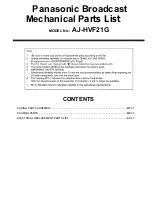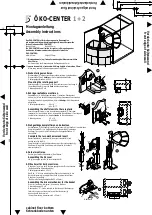
c02.fm
Overview
Introduction
A31003-C1020-S100-03-7620, 12/2017
OpenScape Cordless IP V2, Service Documentation
17
synchronization should occur via LAN. In this case the base station with the
higher sync level will act as LAN master, the base station with the lover sync level
is a LAN slave. Currently, the LAN master must be on Sync level 1.
NOTE:
The LAN master functionality must be explicitly activated (otherwise the
LAN slaves won't work).
In contrast to over-the-air synchronization, LAN-based synchronization requires
less configuration.
On the other hand, high demands are placed on Ethernet characteristics such as
symmetry, packet loss, delay, jitter (primarily delay variation). All of the Ethernet
components involved (especially the switches) therefore have to fulfill special
requirements. If thresholds are exceeded (primarily jitter), this leads to loss of
synchronization, which in turn leads to a resynchronization process. No calls can
be conducted on the relevant DECT IP base station during this process.
PTP messages are exchanged only between the DECT IP Base stations.
DECT IP Base stations who are e.g. separated by iron doors cannot synchronize
each other over the air can use instead PTP.
For PTP, the underlying network must fulfill some restrictions like very little delay,
i.e., no routers or NAT devices (see chapter Section 2.4).
A combination of air and LAN synchronization is possible in a cluster of
synchronous DECT IP base stations.
Advantages of LAN synchronization compared with over-the-air synchronization:
•
Greater flexibility in the arrangement of the base stations as no
synchronization chains need to be formed.
•
Fewer DECT IP base stations required as the overlapping area of the DECT
IP base stations is smaller.
•
Configuration of the system is simplified as all DECT IP base stations can be
synchronized on one synchronization master.
In the event of loss of synchronization, the DECT IP base station stops accepting
calls once all ongoing calls that were being conducted on the asynchronous
DECT IP base station have ended and then it re-synchronizes the asynchronous
DECT IP base station.
















































